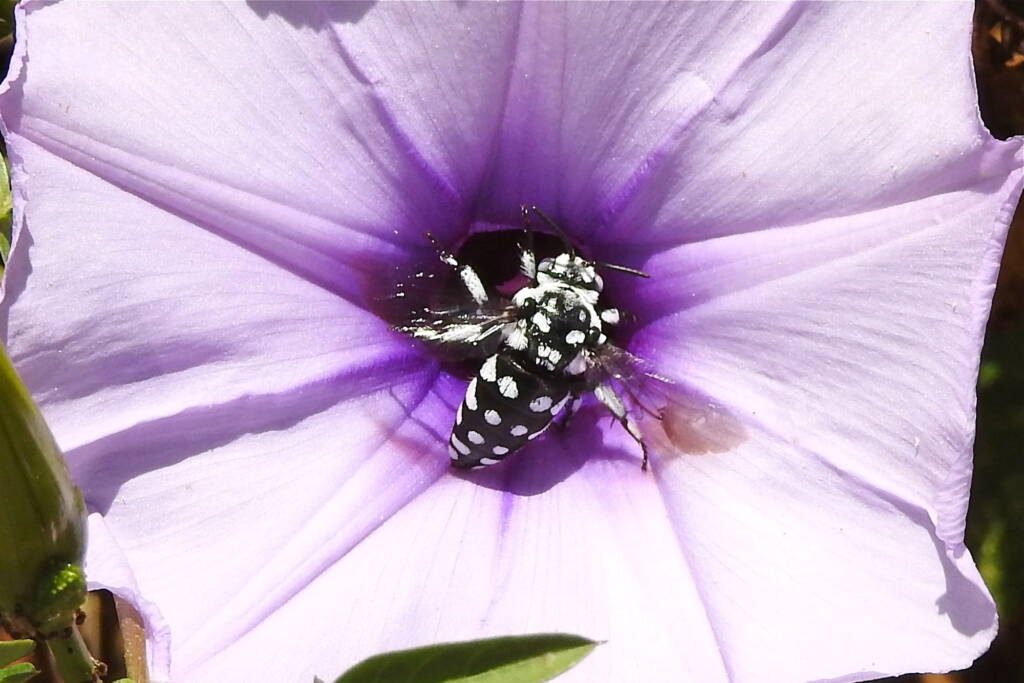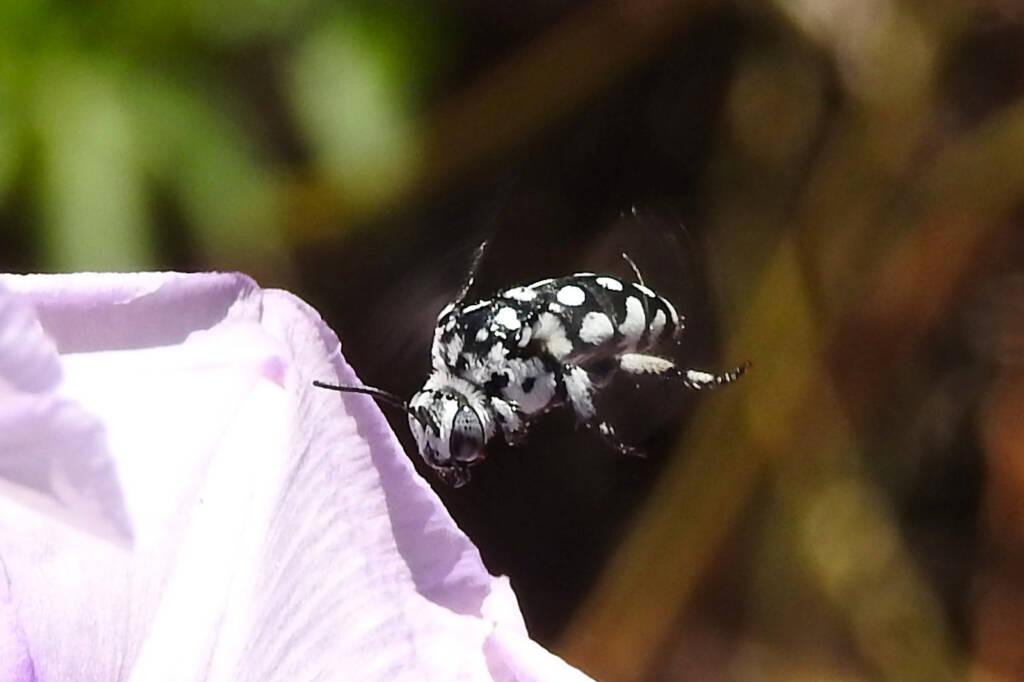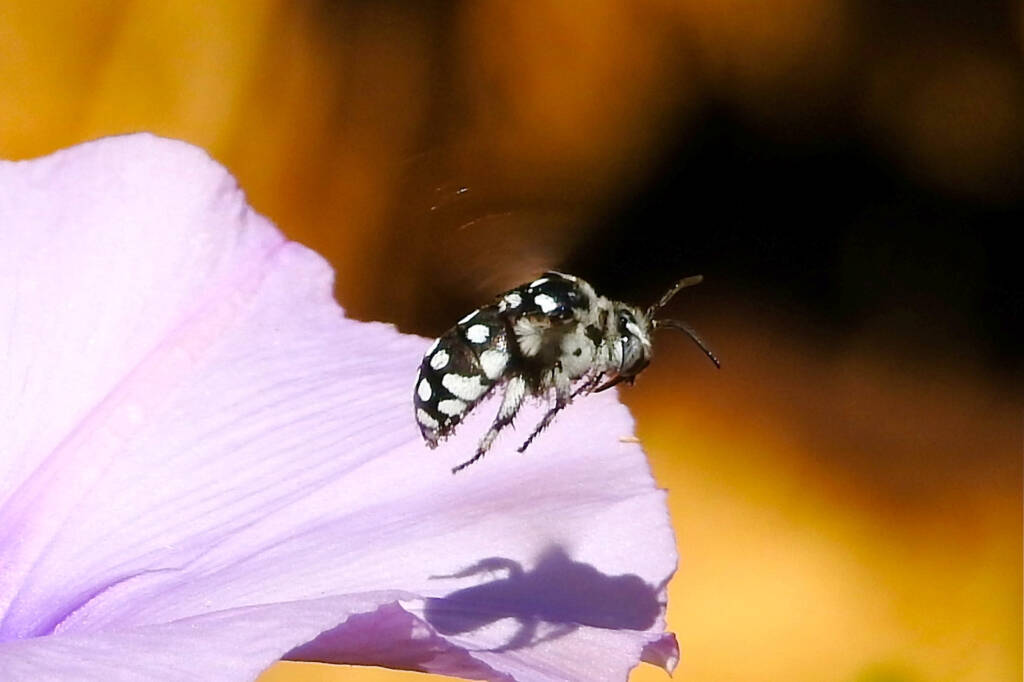Author Gary Taylor ◦
Another common sight on the Morning Glory vine that has taken over at my place (hey, it’s green, it flowers profusely, the bees love it…) is Thyreus waroonensis, or (rather unimaginatively) the Waroona Cuckoo bee.

For those that weren’t aware, like her “common” name suggests she doesn’t make her own nest, she cheats and lays her eggs in Amegilla nests instead. Not ideal for the baby Amegilla but from what I’ve seen over many years of watching them, they barely make a dent in the Amegilla population and even then that dent is only filled with another just as (I think more so 😀) beautiful bee… 🙂

This is our WA (Apidae) Cuckoo bee, not quite as stunning as the Neon one over east (Thyreus nitidulus) but still totally gorgeous… But why did I have to add in (Apidae), why can’t I just keep it simple… Well, that’s ‘cos there’s another type of Cuckoo bee, Coelioxys, with a long pointy bum and not much colour that’s in a totally different family.
True I could have said “our prettiest Cuckoo bee” but as they say, beauty is in the eye of the bee holder, and some may beg to differ…
So! The big fluffy black and white ones (over east you’ve got the Domino Cuckoo bee and the Chequered Cuckoo bee) and the ones with the striking neon blue (or bluey green) are in the major family Apidae, sub family Apinae, (which includes Amegilla (BBB’s) and Tetragonulla (stingless bees) to name a couple), in the genus Thyreus…
Her target host is the genus Amegilla, in her own family. The OTHER cuckoo bee, Coelioxys, is in the major family Megachilidae, sub family Megachilinae, which also contains her targeted host genus (again keeping it in the family), Megachile…
Here is the Waroona Cuckoo bee Thyreus waroonensis in flight 🙂 The last three are in succession, leaving the flower…
I can’t let you go without sharing this… our gorgeous little native Thyreus waroonensis loves the Eucalyptus platypus. They’re not collecting pollen, they’ve just popped in for a bit of a feed, a slurp of nectar (check out the length of the tongue in the second pic) ‘cos as the name “cuckoo” suggests she doesn’t make her own nest, she lays her eggs in other bees nests, favouring Amegilla (Blue banded bees and Teddy bear bees) as hosts. Which is a bit sad for the little Teddy bears, but I still reckon they’re gorgeous, and she looks just as soft and cuddly as any Teddy bear to me 🙂







